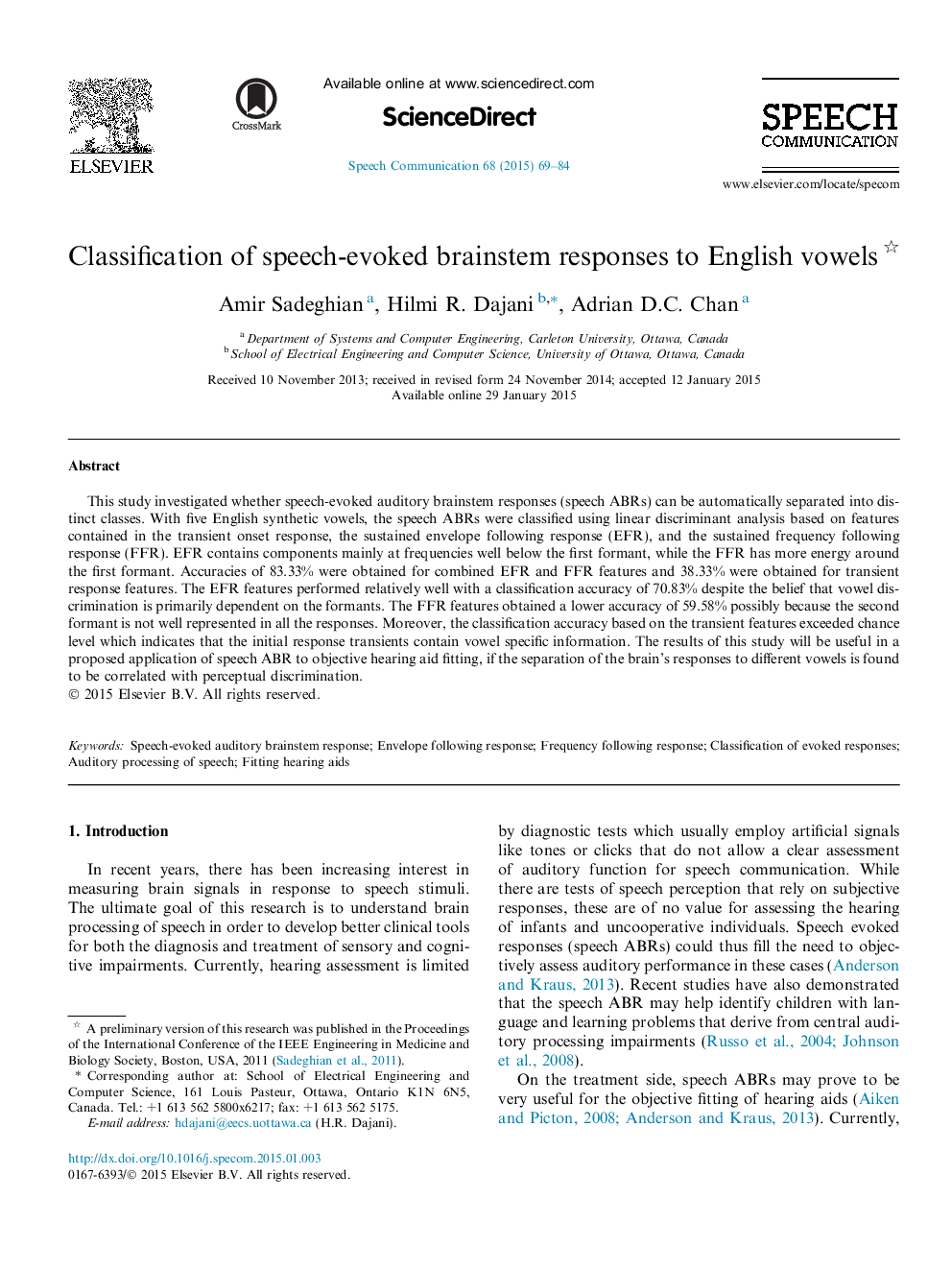| Article ID | Journal | Published Year | Pages | File Type |
|---|---|---|---|---|
| 566773 | Speech Communication | 2015 | 16 Pages |
•We investigated the automatic classification of speech-evoked brainstem responses.•Responses to five vowels were classified based on onset and sustained features.•Combined sustained features gave a classification accuracy of 83.33%.•Classification accuracy with onset response features was better than chance.•Vowel-specific information in responses may be useful for fitting hearing aids.
This study investigated whether speech-evoked auditory brainstem responses (speech ABRs) can be automatically separated into distinct classes. With five English synthetic vowels, the speech ABRs were classified using linear discriminant analysis based on features contained in the transient onset response, the sustained envelope following response (EFR), and the sustained frequency following response (FFR). EFR contains components mainly at frequencies well below the first formant, while the FFR has more energy around the first formant. Accuracies of 83.33% were obtained for combined EFR and FFR features and 38.33% were obtained for transient response features. The EFR features performed relatively well with a classification accuracy of 70.83% despite the belief that vowel discrimination is primarily dependent on the formants. The FFR features obtained a lower accuracy of 59.58% possibly because the second formant is not well represented in all the responses. Moreover, the classification accuracy based on the transient features exceeded chance level which indicates that the initial response transients contain vowel specific information. The results of this study will be useful in a proposed application of speech ABR to objective hearing aid fitting, if the separation of the brain’s responses to different vowels is found to be correlated with perceptual discrimination.
